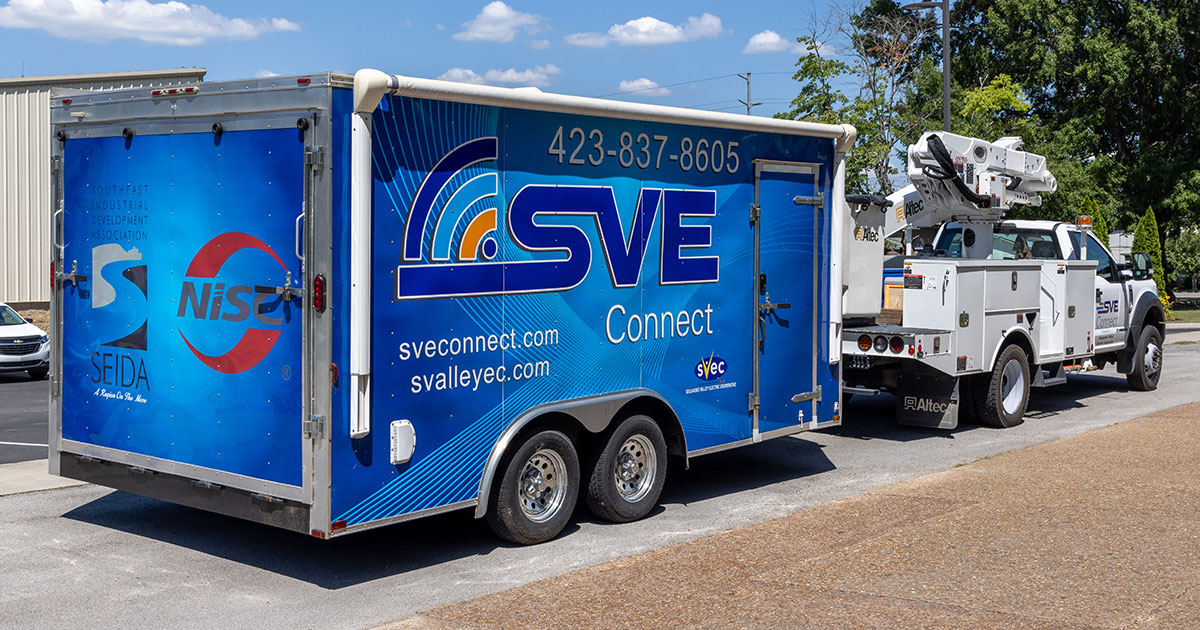Sequachee Valley Electric Cooperative (SVEC) is an electric distribution cooperative headquartered in South Pittsburg, Tenn., a community of about 3,100 people located nearly halfway between Chattanooga and Nashville. The co-op maintains more than 3,200 miles of distribution line and serves more than 37,900 meters.
 |
| Click here to download |
Business Driver of Broadband Investment
Nestled in the foothills of the Cumberland Mountains and adjacent to the Tennessee River, the region has plenty going for it in terms of economic development drivers. But one critical component was missing—reliable high-speed internet. So when the Tennessee Broadband Accessibility Act (TBAA) was enacted in 2017 to enable electric cooperatives to enter the broadband space, SVEC leadership was ready to act.
Encouraged by the high level of trust built with their communities, the cooperative developed a sound business plan and marched forward—despite little available state or federal funding.
“Our Board of Directors said, ‘this is the right thing to do,’” said Mike Partin, SVEC President and CEO. “There wasn’t any option. We were the ones who had to step up and bring high-speed internet to our members.”
Project Overview
The SVEC Board approved plans for the co-op to provide high-speed internet through a not-for-profit fiber broadband company called SVEConnect, and by May 2018, SVEConnect was installing a fiber-to-the-home network.
Calculations showed that a take rate of about 30 percent would help the project be profitable in the near term. Limited by the TBAA to areas not already served by a telephone cooperative, SVEConnect quickly surpassed the 30-percent benchmark and currently serves 6,000-plus customers, which equates to a take rate of more than 50 percent.
“We take pride in our reputation that we’re more than just an energy provider—we’re a solutions provider,” Partin said.
Challenges and Surprises
The electric side of the co-op has been serving its customers’ needs since its incorporation in 1939. But the broadband business—and many of its business processes, operations and identifying funding opportunities—was uncharted territory for SVEC.
The most surprising aspect of the project was an overwhelmingly positive one: SVEC members were more than eager for broadband service.
“The members were all about it, because having reliable service was not something that was common here,” said Mike Birdwell, SVEC manager of ancillary services. “But then the challenge was to manage expectations—somebody gets to be first and somebody has to be last.”
With two additional internet providers in the area to provide competition, it was also an adjustment switching from the cooperative mindset of the electric utility space to the more competitive nature of broadband services.
“You can’t just sit back and say, ‘They have to come to us for broadband,’ because they don’t,” Birdwell said. “So that changed our whole perspective, from customer service to sales. And it totally changed our marketing. So yeah, it was a culture shock to go from non-competitive to competitive business mindset.”
Why This Case Study is Important
A thread of trusted partnerships is woven throughout SVEC’s broadband journey, from project business case, project planning, successful launch and continuing support. Those partnerships include the community they serve, and the experienced project partners who helped along the way.
“Find partners that have experience, no matter if it’s engineering, consulting or billing systems—do your homework and find somebody that’s been in the business a while that can guide you,” Birdwell said.
SVEC’s accounting and customer service staff overlap from the electric side of the business, but they also hired experts from the communications field to help manage the launch of SVEConnect.
Partin also suggested setting realistic expectations. SVEC’s projections showed they could be profitable with a 30-percent take rate—and while they blew that out of the water, it’s never a given.
“It’s doing the homework, rolling your sleeves up and saying this product is going to make a difference in the lives of our members, and this will be the legacy we’ll stand on so it needs to be done right,” Partin said.
This case study was originally published in NRECA RE Magazine’s 2023 Broadband Insert in August 2023.
